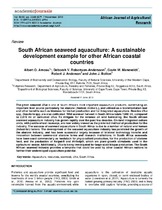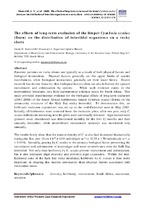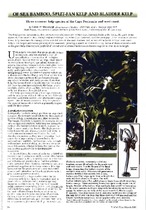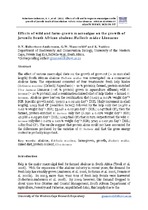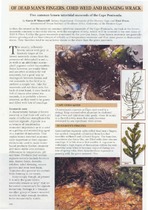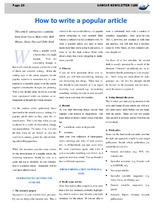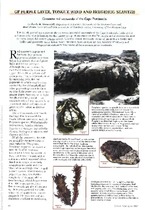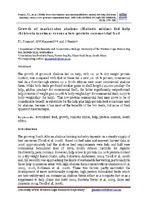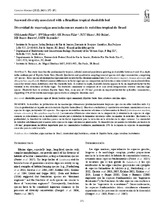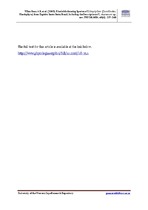Search
Now showing items 1-10 of 44
South African seaweed aquaculture: A sustainable development example for other African coastal countries
(Academic Journals, 2013)
The green seaweed Ulva is one of South Africa's most important aquaculture products, constituting an
important feed source particularly for abalone (Haliotis midae L.), and utilized as a bioremediation tool
and other ...
The effects of long-term exclusion of the limpet Cymbula oculus (Born) on the distribution of intertidal organisms on a rocky shore
(NISC (Pty) Ltd and Taylor & Francis, 2009)
Zonation patterns on rocky shores are typically as a result of both physical factors
and biological interactions. Physical factors generally set the upper limits of species
distributions, while biological interactions ...
Of sea bamboo, split fan kelp and bladder kelp: three common kelp species of the Cape Peninsula and West Coast
(Botanical Society of South Africa, 2001)
The third part in our series on the common intertidal seaweeds of the Cape Peninsula looks at the kelps, the giant brown seaweeds that occur in the subtidal and intertidal gullies of the Cape Peninsula and the west coast. ...
Effects of wild and farm-grown macroalgae on the growth of juvenile South African abalone Haliotis midae Linnaeus
(Taylor and Francis, 2011)
The effect of various macroalgal diets on the growth of grow-out (> 20 mm shell length) South African abalone Haliotis midae was investigated on a commercial abalone farm. The experiment consisted of four treatments: fresh ...
Of dead man's fingers, cord weed and hanging wrack: common brown seaweeds of the Cape Peninsula
(Botanical Society of South Africa, 2000)
In this, the second in the series on common intertidal seaweeds of the Cape Peninsula, we look at the brown seaweeds common to our rocky shores, with the exception of kelp, which will be covered in the next issue of Veld ...
How to write a popular article
(SANCOR, 2008)
This newsletter has criteria for the development of a popular article.
Of purple laver, tongue weed and hedgehog seaweed: common red seaweeds of the Cape Peninsula
(Botanical Society of South Africa, 2001)
The fourth part of our series on the common intertidal seaweeds of the Cape Peninsula looks at the red seaweeds, which form by far the largest group of seaweeds on the Peninsula and dominate the mid to lower intertidal ...
Growth of market-size abalone (Haliotis midae) fed kelp (Ecklonia maxima) versus a low-protein commercial feed
(Taylor & Francis, 2008)
The growth of grow-out abalone fed on kelp, with ca. 10 % dry weight protein
content, was compared with that of those fed a new ,ca. 26 % protein, commercial
feed in a flow-through system on a South African west coast ...
Seaweed diversity associated with a Brazilian tropical rhodolith bed
(Universidad Autónoma de Baja California, 2010)
This study describes the predominantly tropical, subtidal seaweed populations growing on rhodoliths between 4 and 18 m depth
in the southern part of Espírito Santo State (Brazil). Qualitative and quantitative sampling ...
Taxonomy of rhodolith-forming species of Lithophyllum (Corallinales; Rhodophyta) from Espírito Santo State, Brazil
(International Phycological Society, 2009)
The taxonomy of the rhodolith-forming species of Lithophyllum (Corallinales, Rhodophyta) found from Espirito Santo State, Brazil, were evaluated based on extensive subtidal sampling. A comparative analysis of the Brazilian ...

